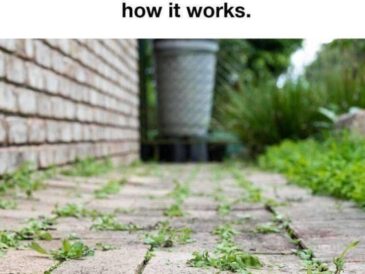🌿⚡ Science is finally exploring something people have instinctively felt for centuries — walking barefoot on natural ground might truly boost your health.
This simple act, known as grounding or earthing, connects your body directly to the Earth’s natural electric field. And early research suggests something remarkable:
👉 your skin absorbs electrons from the ground, which may help calm inflammation, reduce stress hormones, and improve sleep. 😴✨
When your bare feet touch grass, soil, sand, or stone, your body — often filled with positively charged free radicals — interacts with the Earth’s mild negative charge. Some scientists believe this tiny electrical exchange could explain why people feel relaxed, clear-minded, or energized after spending barefoot time outdoors. 🌎🦶
In several small studies, grounding has been linked to:
✔️ reduced pain
✔️ lower cortisol
✔️ improved blood flow
✔️ better sleep quality
And the best part?
It costs nothing. Requires nothing. Just skin touching the ground.
So next time life feels heavy or overwhelming, maybe the antidote isn’t more noise — but simply a moment barefoot, reconnecting with the world beneath you. 🌱💛
👣
For thousands of years, people have walked barefoot on grass, soil, sand, and stone. Many cultures believed that touching the earth directly brought balance, calm, and healing.
Today, modern science is beginning to investigate this old wisdom — and the results are surprisingly supportive.
This natural practice, often called “grounding” or “earthing,” is simple: you take off your shoes and let your bare feet make contact with the earth. No equipment, no cost, no special technique. Just connection.
Here’s what current research, physiological understanding, and traditional knowledge suggest about this timeless habit.
🌍 What Is Grounding?
Grounding means connecting your skin directly to the earth’s surface — walking barefoot on:
- Grass
- Soil
- Sand
- Rocks
- Unpainted concrete
- Moist ground
The idea is that the earth carries a natural electric charge, and when your body touches it, electrons may transfer into the body and influence your nervous system, inflammation responses, and general well-being.
🔬 What Science Is Finding So Far
Research on grounding is still growing, but early studies and observations suggest several potential benefits:
⭐ 1. May Help Reduce Inflammation
Some small scientific studies propose that grounding can influence the body’s electrical environment. This may help neutralize free radicals, which are linked to inflammation.
People who practice grounding regularly often report:
- Reduced aches
- Less joint stiffness
- Better recovery after exercise
While more research is needed, the early findings are promising.
⭐ 2. Supports Stress Reduction & Calmness
Walking barefoot naturally activates pressure points on the feet and stimulates the nervous system. Combined with outdoor air, sunlight, and natural textures, grounding may:
- Lower stress
- Reduce cortisol levels
- Improve mood
- Promote a sense of calm and clarity
It’s a natural reset for your mind and body.
⭐ 3. May Improve Sleep Quality
Some grounding studies suggest that connecting with the earth may help regulate circadian rhythm and promote deeper rest. Many individuals say they fall asleep faster and wake up more refreshed after regular grounding sessions.
⭐ 4. Strengthens Foot Muscles & Balance
When you’re barefoot:
- Your toes spread naturally
- Muscles and tendons engage
- Your body learns proper alignment
This can help improve your posture, stability, and even reduce lower-body pain caused by overly cushioned or tight shoes.
⭐ 5. Boosts Circulation
Walking barefoot increases sensory feedback and encourages better blood flow in the legs and feet. Warm sand, cool grass, or uneven earth signal the body to activate natural stabilizing and circulatory responses.
🌱 Why People Have Believed in Grounding for Centuries
Long before science entered the conversation, ancient cultures recognized the importance of connecting with nature:
- Traditional Chinese Medicine speaks of “earth energy” restoring balance.
- Native cultures practiced grounding during rituals and healing.
- Many holistic traditions encourage barefoot walking for emotional clarity.
Whether symbolic or physical, the human–earth connection has always been considered vital.
Now, modern interest is catching up.
❤️ How to Practice Grounding (Safely)
You don’t need anything special. Just choose a clean, safe area and let your feet touch the earth for 10–20 minutes per day.
Great places include:
- Fresh grass in your yard or park
- Beach sand
- Soil in a garden
- Flat river stones
- Natural earth paths
Avoid:
- Sharp objects
- Polluted soil
- Areas treated with chemicals
- Very hot or very cold ground
🌤️ How Often Should You Do It?
Many people feel benefits with just 10 minutes a day, while others walk barefoot for longer. Even short, regular exposure may help your body unwind and reconnect.
🌿 Final Thoughts
Walking barefoot isn’t a trend — it’s a return to something natural, simple, and deeply human.
And now, science is beginning to confirm what people have intuitively understood for centuries:
Touching the earth may truly support physical health, mental clarity, and emotional balance.
In a world full of noise, technology, and stress, grounding is a peaceful reminder of where we came from — and what our bodies still need.





